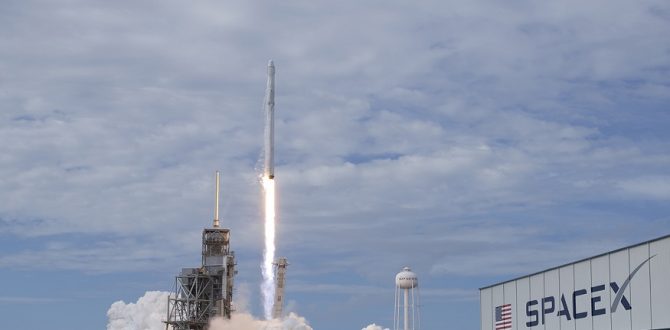Also read: Xiaomi Redmi Note 5 Review: Playing it Safe in 2018
Californians were hoping for a repeat of the spectacle that occurred during a December 22 Falcon 9 launch during exceptionally clear twilight conditions, but this time the sky was much brighter, making the plume less brilliant. The Falcon’s first stage was used to launch a satellite for Taiwan last August and was recovered by landing it on a drone ship in the Pacific. This time there was no effort to recover the first stage and it fell into the sea.
The first stage was an early version of the Falcon 9 and SpaceX is “making room” for a new version that will be qualified for rapid reuse many times, said Tom Praderio, an avionics firmware engineer serving as launch spokesman. SpaceX, however, was attempting to recover the fairing — the aerodynamic covering that protects the satellite during the early phase of launch and is usually discarded after reaching altitudes where the atmosphere’s density is low.
Also read: Walmart to Launch New Online Home Shopping Experience
SpaceX founder Elon Musk tweeted that the fairing system deployed a parafoil and there was an attempt to catch it during descent but that failed. He posted a photo of a ship with a net structure on the stern that he referred to as “a giant catcher’s mitt.” “Missed by a few hundred meters, but fairing landed intact in water. Should be able catch it with slightly bigger chutes to slow down descent,” Musk tweeted. Recovering and reusing major pieces of rockets is one of Musk’s key strategies.
The rocket’s primary payload was a satellite named PAZ for Spanish satellite operator Hisdesat. It carries an advanced instrument for making radar images of Earth for government and commercial purposes, as well as sensors for tracking ships and weather. The satellite was designed for a 5½-year mission, orbiting Earth 15 times each day at an altitude of 514 kilometers (319 miles), covering the entire planet every 24 hours. It joins two other radar satellites in the same orbit covering the same ground, increasing acquisition of data.The rocket also deployed two small test satellites for a proposed system that would bring internet access to remote areas. The “Starlink” system would require thousands of satellites operating in low Earth orbit.
Musk tweeted that the satellites were named Tintin A and B and were communicating with Earth stations. “Tintin A & B will attempt to beam ‘hello world’ in about 22 hours when they pass near LA,” Musk added. Praderio, the launch spokesman, said that even if the two satellites work as planned, “we still have considerable technical work ahead of us to design and deploy” the constellation.
Watch: Tech and Auto Show Ep 31 | Auto Expo 2018 Special | Unveilings & Launches
Also Watch
-
 Auto Expo 2018: First Look of TVS Creon Concept at Auto Expo
Auto Expo 2018: First Look of TVS Creon Concept at Auto Expo
-
 Maldives Emergency : India Appears to be Losing Ground to China in the Indian Ocean | World In Flux
Maldives Emergency : India Appears to be Losing Ground to China in the Indian Ocean | World In Flux
-
 Nirav Modi | PNB Scam | What Modi Wrote In His Letter | Decoded
Nirav Modi | PNB Scam | What Modi Wrote In His Letter | Decoded
-
 Styling The Models At LFW: Behind The Scenes
Styling The Models At LFW: Behind The Scenes
- elon musk
- Falcon 9
- los angeles
- Pacific Ocean
| Edited by: —
 Auto Expo 2018: First Look of TVS Creon Concept at Auto Expo
Auto Expo 2018: First Look of TVS Creon Concept at Auto Expo Maldives Emergency : India Appears to be Losing Ground to China in the Indian Ocean | World In Flux
Maldives Emergency : India Appears to be Losing Ground to China in the Indian Ocean | World In Flux Nirav Modi | PNB Scam | What Modi Wrote In His Letter | Decoded
Nirav Modi | PNB Scam | What Modi Wrote In His Letter | Decoded Styling The Models At LFW: Behind The Scenes
Styling The Models At LFW: Behind The Scenes- elon musk
- Falcon 9
- los angeles
- Pacific Ocean
| Edited by: —






